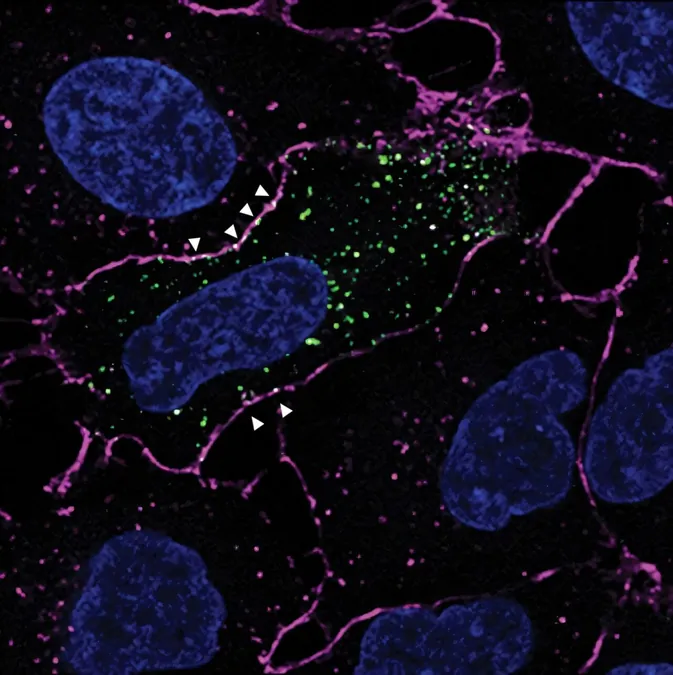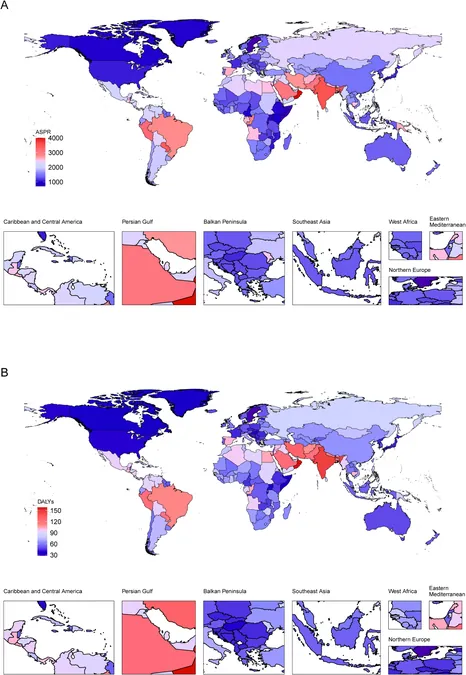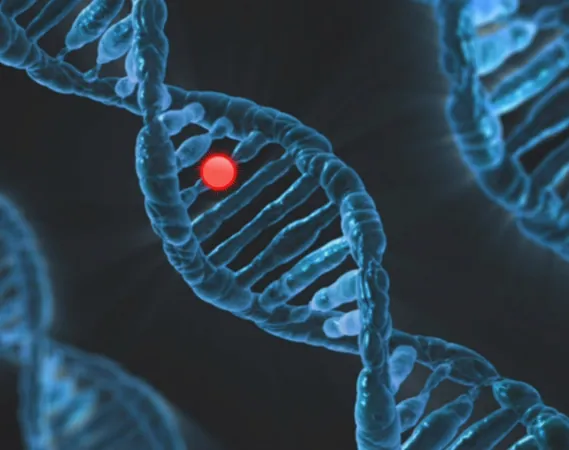
Unlocking the Door to Enterovirus Infection: Groundbreaking Discovery Paves the Way for Future Vaccines!
2025-04-03
Author: Li
Introduction
In a remarkable breakthrough for viral research, scientists at Stanford University and their collaborators have pinpointed a crucial protein that enables a range of enteroviruses, including enterovirus D68, to infiltrate human cells. While poliovirus is infamous for its paralytic effects, enterovirus D68 has also been linked to alarming outbreaks among young children, with symptoms strikingly similar to those of poliovirus—and no vaccine or specific treatment available.
Published Research
Published in the prestigious journal *Nature*, this research sheds light on the entry mechanism of enterovirus D68, revealing new avenues for vaccine development.
Key Finding
The standout finding of this study centers around a receptor protein on the surface of human cells, identified as MFSD6. It was determined that enterovirus D68 cannot penetrate cells lacking this protein. Lead researcher, Professor Jan Carette, and his team adopted an innovative approach, disabling genes throughout the human genome one by one—an "unbiased" technique that revealed MFSD6 as the key to viral entry.
“When you put the key in, it locks the door, preventing others from gaining access,” explained doctoral candidate Lily Xu, who co-authored the study. What’s even more groundbreaking is that when mice were treated with a soluble form of the MFSD6 protein, they were almost entirely shielded from infection. This soluble protein acted as a decoy, preventing the virus from binding to genuine cell receptors.
Vaccine Development
Understanding how to craft vaccines that can effectively bind to and neutralize the virus is essential. To facilitate this, researchers employed cutting-edge cryogenic electron microscopy (cryo-EM) techniques at SLAC National Accelerator Laboratory, allowing them to visualize the interaction between the virus and its MFSD6 receptor in stunning detail.
3D Modeling
Their efforts paid off—combining this high-resolution imaging with advanced modeling, they constructed a 3D model detailing the protein-virus interaction at a molecular level. “These 3D structures open up possibilities for designing new therapeutic molecules that can disrupt the infection cycle,” highlighted researcher Grigore Pintilie.
Additional Discoveries
Interestingly, the cryo-EM scans revealed that the MFSD6 receptor is adorned with numerous sugar molecules. This discovery, made by Professor Carolyn Bertozzi and her research team, adds another layer of complexity to the interaction and could inspire novel vaccine designs.
Future Directions
As Lauren Varanese, another co-author, affirmed, “Our goal is to see this knowledge translated into host-targeted therapeutics or drugs that directly inhibit enterovirus D68.”
While any preventative treatments informed by this significant research may take five to ten years or more to come to fruition, the methods developed here hold promise not only for battling enterovirus D68 but could also be extended to fight other viral threats looming on the horizon.
Conclusion
With science making strides towards a healthier future, this discovery provides a beacon of hope in the fight against enteroviral infections and underlines the importance of continued funding and support for virology research. Stay tuned—the next wave of vaccines could be just around the corner!


 Brasil (PT)
Brasil (PT)
 Canada (EN)
Canada (EN)
 Chile (ES)
Chile (ES)
 Česko (CS)
Česko (CS)
 대한민국 (KO)
대한민국 (KO)
 España (ES)
España (ES)
 France (FR)
France (FR)
 Hong Kong (EN)
Hong Kong (EN)
 Italia (IT)
Italia (IT)
 日本 (JA)
日本 (JA)
 Magyarország (HU)
Magyarország (HU)
 Norge (NO)
Norge (NO)
 Polska (PL)
Polska (PL)
 Schweiz (DE)
Schweiz (DE)
 Singapore (EN)
Singapore (EN)
 Sverige (SV)
Sverige (SV)
 Suomi (FI)
Suomi (FI)
 Türkiye (TR)
Türkiye (TR)
 الإمارات العربية المتحدة (AR)
الإمارات العربية المتحدة (AR)